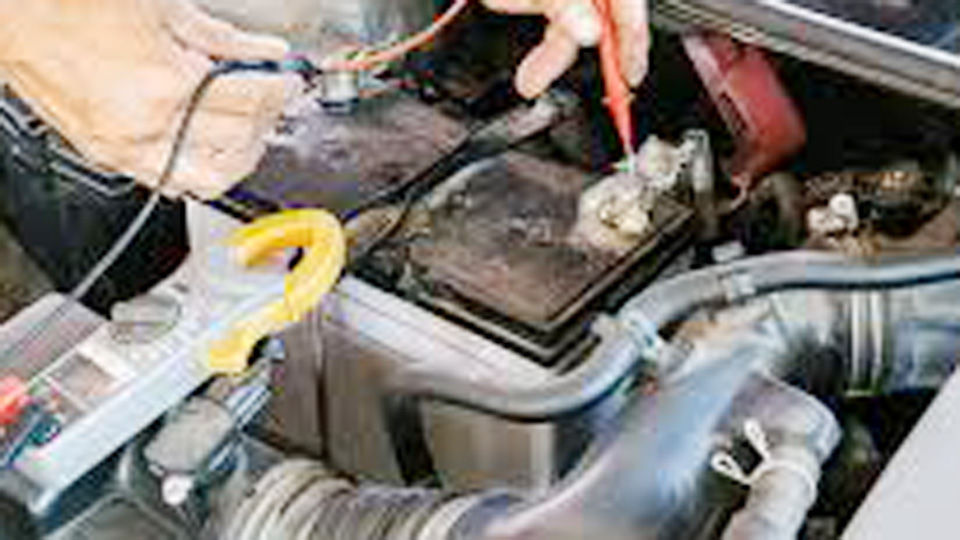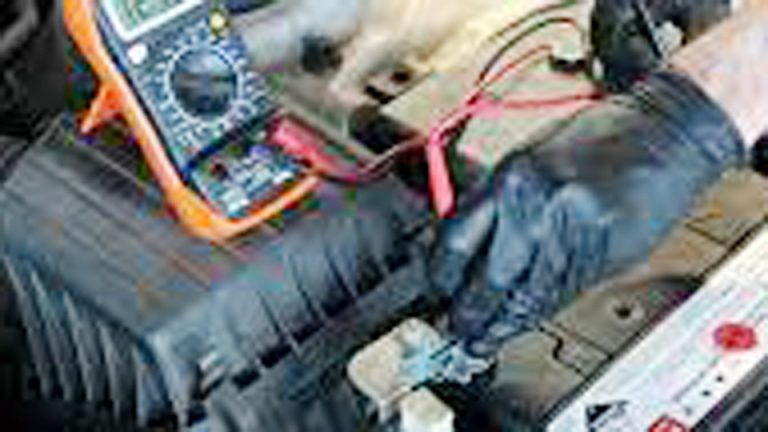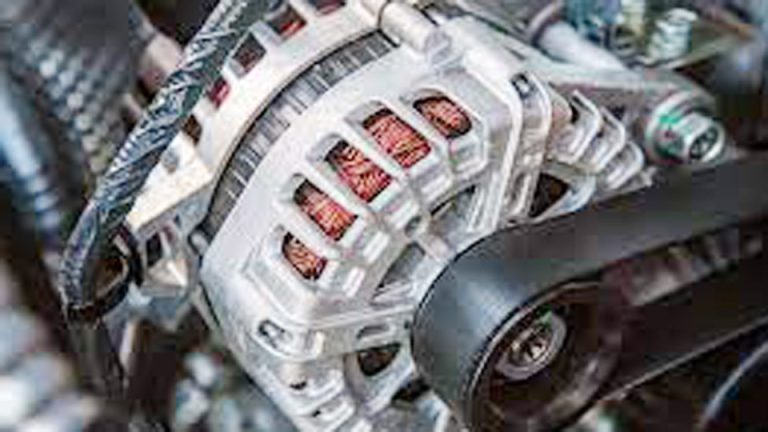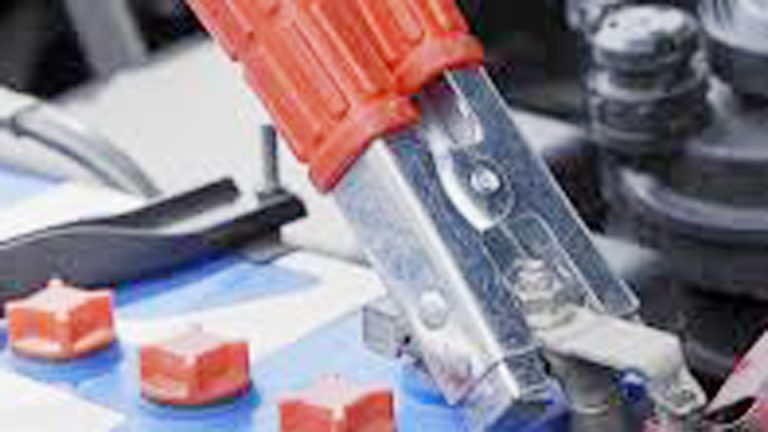Absolutely—it might surprise you, but something as small as an interior light can drain a car battery if it’s left on long enough. I’ve had plenty of cars come into my shop where the owner thought the alternator or starter had failed, but the real culprit was a dome light or glovebox light that stayed on overnight. A single bulb doesn’t draw a ton of power, but over hours (or days), it can pull enough juice to leave your battery too weak to start the engine.
When drivers ask me “Can an Interior Light Drain a Car Battery?”, I always explain that it depends on how long it’s left on and the condition of the battery itself. A healthy, newer battery might survive a night with the light on, but an older or weaker battery could be dead by morning.
The key is catching it early—checking for lights that don’t shut off properly, making sure switches work, and keeping an eye on your battery’s age and health. In this article, I’ll break down why interior lights cause drain, how to test for hidden power draws, and what you can do to avoid getting stranded.

Image by oards
Why Interior Lights Matter for Your Car’s Battery Life
Interior lights—those dome lights, map lights, or cargo lights—are more than just a convenience for finding your keys in the dark. They’re part of your car’s electrical system, drawing power directly from the battery. A single bulb might not seem like much, but leave it on for hours, and it’s like a slow leak in a tire. Over time, it adds up, especially if your battery is already old or your charging system is weak. Keeping these lights in check impacts reliability (no one wants to be stranded) and can save you the cost of a new battery or a tow truck.
What Are Interior Lights and What Do They Do?
Interior lights include dome lights (the overhead light that comes on when you open the door), map lights (small focused beams for reading or searching), courtesy lights (in footwells or door panels), and cargo or trunk lights. These lights typically use low-wattage bulbs—incandescent, halogen, or LED in newer vehicles—and are wired to your car’s battery through a fuse and switch system. They’re designed to turn on when doors are opened, when you hit a manual switch, or in some fancy setups, via motion sensors or timers.
Their job is simple: provide visibility inside the cabin without blinding you while driving. But here’s the catch—they’re not “smart” in older cars. If you accidentally leave a door ajar or flip a switch to the “always on” position, they’ll keep pulling power until the battery’s dead.
Common Problems with Interior Lights
In my years turning wrenches, I’ve seen interior lights cause trouble in a few ways:
- Left on accidentally: The classic “I forgot to turn off the dome light” scenario. Kids are notorious for this—leaving the rear map light on after reading in the backseat.
- Faulty door switches: A bad door jamb switch can trick the system into thinking a door’s open, keeping the light on even when everything’s closed.
- Stuck relays or timers: In modern cars with auto-off timers, a glitchy relay or control module can keep lights on indefinitely.
- Aftermarket mods gone wrong: DIYers installing LED upgrades sometimes mess up the wiring, causing a constant draw.
- Dimming or flickering: This can signal a dying bulb, loose connection, or a battery on its last legs.
Any of these can drain your battery, especially if the issue persists overnight or longer.
When and Why You Need to Address Interior Light Issues
If your car won’t start and you notice an interior light was left on, that’s a red flag. A healthy car battery has about 12.6 volts when fully charged, but a single 10-watt dome light left on for 10 hours can pull enough amps to drop it below the 12-volt threshold needed to crank the engine. For a typical 60 amp-hour battery, that’s game over.
You’ll need to act if:
- Your battery dies repeatedly, and you suspect lights are the culprit.
- A light stays on even with doors closed and switches off.
- You’re upgrading to LEDs and want to avoid electrical issues.
- You notice dimming or flickering, which could point to deeper wiring problems.
Ignoring these issues risks not just a dead battery but also strain on your alternator, which has to work harder to recharge a drained battery, potentially shortening its lifespan.
OEM vs. Aftermarket Interior Light Bulbs: What’s the Difference?
When it’s time to replace a bulb or troubleshoot your interior lights, you’ve got two main options: OEM (original equipment manufacturer) or aftermarket. Let’s break it down with a comparison table based on my experience in the shop.
| Feature | OEM Bulbs | Aftermarket Bulbs |
|---|---|---|
| Quality | Consistent, designed for your vehicle | Varies widely by brand |
| Price | $5–$15 per bulb (e.g., Ford, GM, Toyota) | $2–$20 (e.g., Sylvania, Philips, generic) |
| Compatibility | Guaranteed fit for your make/model | May require adapters or cause error codes |
| Lifespan | 1,000–2,000 hours (incandescent/halogen) | 500–50,000 hours (varies by type/brand) |
| Brightness | Standard output, matches factory specs | Often brighter, especially LEDs |
| Warranty | Usually covered by dealer if new | Varies, some brands offer 1–2 years |
OEM Bulbs: Pros and Cons
Pros:
- Perfect fit, no guesswork. If you drive a 2018 Honda Accord, an OEM bulb from Honda will slot right in.
- Reliable performance. They’re tested for your car’s electrical system.
- Less likely to cause CAN bus errors in modern vehicles with computer-controlled lighting.
Cons:
- Pricey. A single dome light bulb from a dealership can cost as much as a whole pack of aftermarket LEDs.
- Not always the brightest or longest-lasting. OEMs often prioritize cost over cutting-edge tech.
Aftermarket Bulbs: Pros and Cons
Pros:
- Affordable. Brands like Sylvania or Philips offer quality LEDs for half the price of OEM.
- Brighter and longer-lasting. LED aftermarket bulbs can last 10x longer than incandescent OEMs.
- Customizable. You can choose colors (white, blue, red) or brightness levels for a personalized look.
Cons:
- Quality varies. Cheap no-name LEDs from Amazon might flicker or burn out fast.
- Compatibility issues. Some aftermarket LEDs trigger “bulb out” warnings on newer cars like a 2023 Toyota RAV4.
- Installation can be tricky. You might need resistors or adapters to avoid electrical gremlins.
My Take: For most DIYers, aftermarket LEDs from reputable brands like Philips or Sylvania are a solid choice for brightness and longevity, especially if you’re upgrading an older car like a 2005 Ford F-150. But if you’re driving a high-tech BMW or Audi, stick with OEM to avoid dashboard warning lights. Always check your owner’s manual for the correct bulb size (e.g., 194, 168, or DE3175).
How to Spot Genuine vs. Fake Spare Parts
Counterfeit bulbs and electrical parts are a real problem, especially when shopping online. I once had a customer bring in a 2012 Chevy Silverado with flickering aftermarket LEDs that turned out to be knockoffs. Here’s how to avoid fakes:
- Buy from reputable sources: Stick to AutoZone, O’Reilly, or trusted online retailers like RockAuto. Avoid sketchy eBay sellers with no reviews.
- Check packaging: Genuine Sylvania or Philips bulbs have clean, professional packaging with clear part numbers and barcodes.
- Inspect the bulb: Fakes often have sloppy soldering, uneven casings, or misspelled brand names.
- Price check: If a $20 LED bulb is selling for $3, it’s probably too good to be true.
- Test before installing: Pop the bulb into a socket (if possible) to check for flickering or dim output before committing.
Step-by-Step Guide: Diagnosing and Fixing an Interior Light Battery Drain
Let’s get hands-on. If you suspect an interior light is draining your battery, here’s how I’d tackle it in the shop. Grab a multimeter, a screwdriver, and maybe a trim removal tool.
Step 1: Confirm the Battery Drain
- What to do: Check your battery’s voltage with a multimeter. A fully charged battery should read 12.6–12.8 volts. Below 12.2 volts, it’s drained.
- Pro tip: If the battery’s dead, jump-start the car and let it run for 20 minutes to recharge before testing. But don’t rely on this long-term—a weak battery needs replacing.
Step 2: Check for Lights Left On
- What to do: Walk around the car at night with all doors closed. Look for any glowing dome, map, or cargo lights. Open and close each door to see if the lights respond properly.
- Common mistake: Forgetting to check the trunk or cargo area. I once found a Dodge Caravan’s cargo light stuck on because of a bad switch—drained the battery in two days.
Step 3: Test Door Switches
- What to do: Locate the door jamb switches (small plungers near the hinges). Press each one manually while watching the interior lights. If a light stays on, the switch might be faulty.
- Fix: Spray electrical contact cleaner on the switch or replace it (usually $10–$20 at AutoZone). Use a trim tool to avoid scratching the door frame.
Step 4: Inspect Wiring and Fuses
- What to do: Check the interior light fuse in your car’s fuse box (consult the owner’s manual). A blown fuse means a short circuit. If the fuse is fine, use a multimeter to check for parasitic draw (more on this below).
- Pro tip: A parasitic draw over 50 milliamps with the car off is a problem. I’ve seen frayed wires behind a dome light cause a 200mA draw in a 2010 Toyota Camry.
Step 5: Replace Bulbs if Needed
- What to do: If a bulb’s dim or flickering, replace it. For example, a DE3175 bulb fits most Honda and Toyota dome lights. LEDs are a great upgrade—look for 6000K white for crisp lighting.
- Installation tip: Use gloves to avoid getting oils on halogen bulbs, which can shorten their life. For LEDs, ensure polarity is correct (some bulbs need to be flipped if they don’t light up).
Step 6: Test the System
- What to do: After fixing switches or bulbs, recheck the battery voltage and monitor for a day or two. If the problem persists, it might be a deeper issue like a faulty body control module—time to visit a pro.
Tools You’ll Need:
- Multimeter ($20–$50 at Harbor Freight)
- Screwdriver set (Phillips and flathead)
- Trim removal tool ($10 for a basic set)
- Electrical contact cleaner
- Replacement bulbs (check your manual for size)
Safety Tip: Disconnect the battery’s negative terminal before working on wiring to avoid shocks or shorts. And never force a bulb into a socket—double-check the size first.
Maintenance Tips to Prevent Interior Light Battery Drains
Once you’ve fixed the issue, keep your interior lights from causing trouble again:
- Check switches regularly: Every oil change, test your door switches by opening and closing doors at night.
- Upgrade to LEDs: They use less power (1–2 watts vs. 10 watts for incandescent), so even if left on, they’re less likely to kill your battery.
- Set a timer habit: If your car doesn’t have an auto-off timer, get in the habit of double-checking lights before locking up.
- Keep the battery healthy: A weak battery (3+ years old) is more vulnerable to drains. Test it annually at a shop or with a multimeter.
- Clean contacts: Dust or corrosion on bulb sockets or switches can cause issues. A quick blast of contact cleaner works wonders.
Real-World Anecdote: The Case of the Haunted Dome Light
A few years back, a customer rolled into my shop with a 2008 Ford Escape that kept dying overnight. They swore they hadn’t left any lights on. After a quick check, I found the dome light faintly glowing even with the doors closed. Turned out, the door jamb switch was gummed up with years of dirt and coffee spills. A $5 switch and 10 minutes of cleaning later, the problem was gone. Moral of the story? Don’t ignore the small stuff—it can save you a $150 battery or a $200 alternator down the line.
Conclusion: Smarter Decisions for Your Car’s Interior Lights
Interior lights might seem like a minor part of your car, but they can cause major headaches if they’re draining your battery. By understanding how they work, checking for common issues like faulty switches or stuck relays, and choosing the right bulbs (OEM for reliability, aftermarket LEDs for brightness), you can keep your car starting strong. Whether you’re a DIYer swapping bulbs in your garage or a driver just trying to avoid a tow, the key is vigilance—check those lights, test your battery, and don’t skimp on quality parts. Pro tip: Always carry a small multimeter in your toolbox. It’s your best friend for catching electrical gremlins before they leave you stranded.
FAQ: Common Questions About Interior Lights and Battery Drains
Can a single interior light really kill my car battery?
Yes, it can. A 10-watt dome light left on for 10 hours can drain 10–15% of a typical car battery’s capacity, enough to prevent starting, especially if the battery’s old or weak.
How do I know if my interior light is draining the battery?
Check for lights staying on with doors closed, test battery voltage (below 12.2 volts is trouble), or use a multimeter to measure parasitic draw. Anything over 50 milliamps with the car off is a red flag.
Are LED interior lights better for preventing battery drain?
Absolutely. LEDs use 1–2 watts compared to 10 watts for incandescent bulbs, so they’re far less likely to drain your battery even if left on accidentally.
How much does it cost to fix a faulty door switch?
A door jamb switch costs $10–$20, and labor at a shop runs $50–$100. DIY it with a screwdriver and save the labor cost.
Can I use any LED bulb for my car’s interior lights?
Not always. Check your owner’s manual for the correct bulb size (e.g., 194, DE3175). For newer cars, ensure the LED is CAN bus-compatible to avoid error codes.



